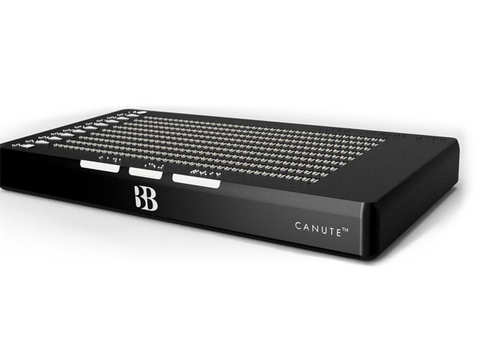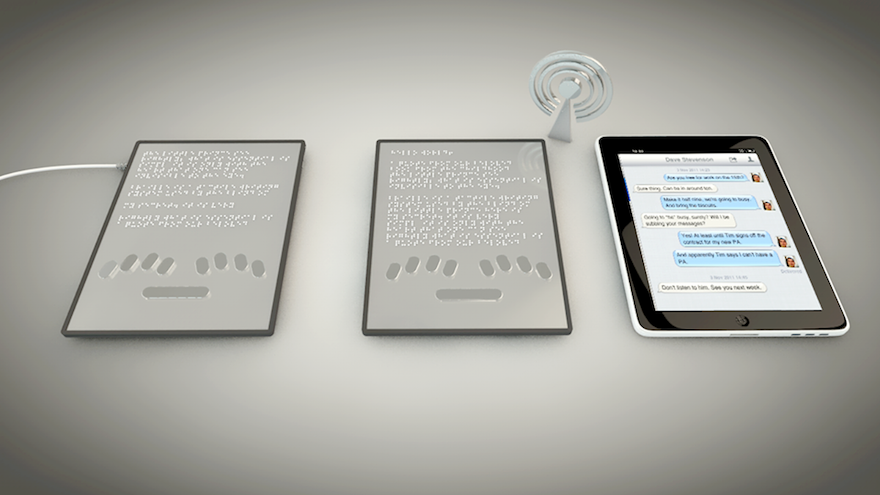Explore Advanced Glasses for the Visually Impaired and Their Benefits
Explore Advanced Glasses for the Visually Impaired and Their Benefits
Blog Article
Discover Cutting-edge Tools Developed for the Visually Damaged
The growth of ingenious devices for the visually impaired represents a considerable innovation in ease of access and freedom. Technologies such as wise glasses with AI capacities and mobile applications created to provide acoustic descriptions are improving daily experiences for customers. In addition, wearable tools that employ haptic comments improve ecological understanding, while modern Braille advancements offer new means to engage with message. As these devices remain to evolve, their effect on the lives of those with visual disabilities raises vital inquiries concerning the future of inclusivity and freedom in different facets of life. What exists in advance in this technological landscape?
Smart Glasses for Navigating

Smart glasses made for navigating are reinventing the means visually impaired individuals interact with their environment. These innovative tools use a combination of video camera modern technology, expert system, and acoustic responses to give real-time info regarding environments. By utilizing challenge detection systems, smart glasses can inform customers to potential risks, allowing much safer wheelchair in both unknown and familiar setups.
The assimilation of GPS innovation further improves navigating abilities, enabling users to get acoustic instructions as they relocate. This hands-free strategy not just cultivates independence however also encourages aesthetically impaired individuals to browse metropolitan landscapes with enhanced self-confidence. Furthermore, many smart glasses are geared up with features that identify landmarks and road indications, giving contextual details that improves the customer experience.
Moreover, the growth of these gadgets is constantly advancing, with companies functioning to boost the accuracy of object recognition and increase the array of navigational functions. As wise glasses end up being more inexpensive and available, they hold the possible to considerably change every day life for aesthetically damaged users. Eventually, these ingenious devices represent a critical action towards inclusivity, offering improved wheelchair and a higher sense of freedom for individuals browsing the globe around them.

Mobile Apps for Daily Living
Exactly how can mobile applications improve the day-to-days live of aesthetically impaired people? Mobile applications are revolutionizing the method visually impaired users browse their atmospheres, handle everyday tasks, and gain access to information. These applications provide necessary assistance via various capabilities, promoting freedom and enhancing top quality of life.
Several innovative mobile apps are developed especially for day-to-day living. Applications like Be My Eyes link aesthetically damaged customers with sighted volunteers via video phone calls, permitting them to obtain real-time support with tasks such as checking out tags or navigating unfamiliar spaces. Seeing AI, created by Microsoft, makes use of man-made intelligence to explain environments, read text, and identify things, effectively transforming a smart device into an effective tool for daily assistance.
Furthermore, navigation apps tailored for the visually impaired, such as Aira and BlindSquare, offer audio-based directions and environmental details, allowing customers to traverse their surroundings safely and with confidence. Beyond navigation and immediate help, mobile applications additionally support organization and job administration, with features that help individuals establish reminders, develop to-do listings, and track appointments. In recap, mobile applications act as crucial sources, encouraging aesthetically impaired people to lead more independent and satisfying lives.
Wearable Technologies for Support
Empowerment through technology is progressively evident in the world of wearable gadgets created eye center to assist aesthetically damaged individuals. These innovative tools incorporate seamlessly right into day-to-day live, boosting navigation and offering vital feedback to customers. Wise glasses equipped with cameras can recognize faces and read message aloud, permitting individuals to connect even more with confidence in social and specialist settings.
An additional notable improvement is using haptic comments systems in wearable devices. These systems utilize vibrations or other responsive signals to share information about the individual's atmosphere, such as barriers or modifications in terrain, improving flexibility and safety. Wearable innovations likewise include wristbands that link to smartphones, notifying users to notifications through subtle resonances, therefore improving connectivity without reliance on visual cues.
As these innovations remain to evolve, they are not just enhancing self-reliance for visually impaired people but additionally cultivating a higher sense of inclusion in culture. By linking the gap between challenges encountered in day-to-day living and the capacity for freedom, wearable modern technologies work as pivotal tools in the quest for equal rights and empowerment for those with aesthetic problems.
Sound Summary Devices
Sound summary devices play an important function in boosting availability for visually impaired people, offering them with the ability to involve with visual media. Speech-to-text devices for low vision. These devices use narrated summaries of key visual components in films, television programs, and live efficiencies, guaranteeing that users can completely understand the context and emotions communicated with visuals
Sound description can be integrated into various systems, consisting of streaming services, movie theater testings, and live theater. Numerous preferred streaming services currently consist of audio description as an ease of access attribute, permitting viewers to choose it easily. Along with conventional media, specialized applications likewise exist, giving audio descriptions for art exhibits, galleries, and other cultural events.
The efficiency of audio description rests on the skill of the narrators, who need to share aesthetic information succinctly without diminishing the initial sound. Innovations in this field are additionally leading the way for even more tailored experiences, where users can adjust the degree of information and pacing according to their preferences.
Braille Innovations and Tools
Braille gadgets and technologies have actually substantially changed the means visually damaged individuals connect with text and information. Modern developments have actually led to the growth of flexible tools that improve literacy and self-reliance amongst customers.
Moreover, portable Braille notetakers combine traditional Braille input with modern performances, facilitating note-taking, organizing, and record editing and enhancing on the move. Speech-to-text devices for low vision. These small devices typically include text-to-speech capabilities, linking the gap in between Braille and acoustic info
Furthermore, cutting-edge Braille printers have arised, allowing next customers to create Braille labels, documents, and academic products efficiently. This availability fosters greater engagement in educational and specialist settings, eventually advertising inclusivity.
Additionally, research into clever Braille technologies remains to broaden. Tools that include expert system are being discovered to offer real-time navigating help and contextual information, enhancing the user experience in varied settings. On the whole, these developments show a dedication to equipping aesthetically impaired people via innovation, ensuring they can quickly gain access to and engage with the world around them.

Final Thought
The advancement of innovative devices for the aesthetically impaired significantly boosts freedom and top quality of life. These modern technologies not only foster better inclusion but additionally promote freedom in everyday tasks, ultimately adding to a more accessible and fair society for aesthetically impaired individuals.
As wise glasses become a lot more available and inexpensive, they hold the possible to significantly change daily life for visually damaged individuals. Mobile apps are revolutionizing the means aesthetically damaged users navigate their atmospheres, manage daily jobs, and access details. Applications like Be My Eyes attach aesthetically damaged users with sighted volunteers by means of video calls, enabling them to obtain real-time help with jobs such as reviewing tags or browsing unfamiliar spaces.Furthermore, navigation applications customized for the aesthetically damaged, such as Aira and BlindSquare, pop over to this site use audio-based directions and environmental details, allowing users to traverse their surroundings safely and confidently.The improvement of innovative tools for the aesthetically damaged dramatically enhances independence and quality of life.
Report this page